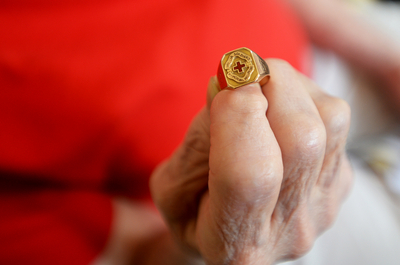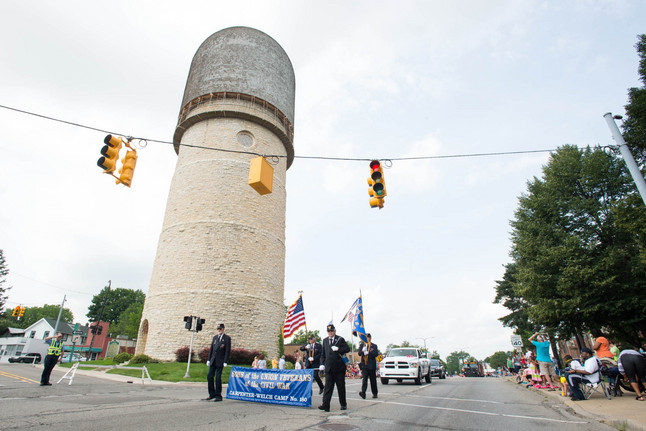Happy Fourth of July!

Richard Kinsey is welcoming some visitors from across the pond to celebrate the Fourth of July this year. Although the two countries may have had their differences in the past, Kinsey is looking forward to appreciating their similarities this holiday weekend.
AnnArbor.com file photo
As irony would have it, I am pleased to announce that my British relatives arrived in town on Tuesday and will be spending the Fourth of July celebrating with us — complete with fireworks. Apparently they do not hold a grudge over that little rebellion thing in 1776. It is great that our two countries have had ups and downs and we still can remain supportive of each other. I also must give their country the honor and credit of establishing the modern policing model used in the U.S. today.
In 1829 Sir Robert Peel established the London Metropolitan Police Department and ushered in the modern era of policing. Peel believed the police should deter and prevent crime and disorder. He believed in order to be successful, a police department needed the support of the public they served. When prevention and deterrence were not enough, the police should investigate crime and arrest criminals.
His police department was a paramilitary organization — which is how most modern professional police departments operate today — because in times of emergencies decisions must be made quickly, orders issued and those orders immediately executed. In an emergency there is no time for committee, debate, analysis, market sampling, poll or vote.
The paramilitary model presumes command officers, who are promoted for their wisdom and good judgment, direct less experienced frontline officers. Those command officers are responsible — good or bad — for the performance of the officers they command. The uniform also is important to the paramilitary model because it helps citizens to immediately distinguish who an officer is and where help can immediately be found.
I just learned from a BBC article the reason police wear blue may date back to Peel’s department, whose uniforms were blue so they would not be mistaken for the British Army Soldier’s red uniform. Peel wanted the citizens his department served to realize that although his officers were uniformed, disciplined and professional, they were not the military and thus the country was not under military rule.
In honor of Peel’s contribution to modern policing, the officers of the London Metropolitan Police Department are to this day known as “bobbies.”
About 20 years ago one of my colleagues hosted a bobby in his home. I had the honor and privilege of canoeing him down the Huron River in my trusty Old Town Discovery 169, which continues to serve me, although not as much as I would like.
The bobby had a chance to ride along on patrol with some Ann Arbor Police Department officers and we spoke of his experiences over several adult beverages after we got off the river. I simply was amazed to hear it surprised him how much respect criminals give to American police officers.
Having been on the receiving end of taunts, insults, rocks, bottles, spit, fists, feet, knees, edges — you name it — I was astounded. The bobby went on to relate that the criminals in England respond to verbal direction with insults and taunts that usually escalate into physical violence. The bobby even said it was not uncommon for one of his own to get in several physical fights a day with eventual arrestees.
For a country known for its civility and proper manners, this confused me. I was taught by my dad that U.S. soldiers stationed in England — where he was assigned in WWII before and after being severely wounded just outside of St. Lo, France—were warned to obey the bobbies or suffer the consequences of a billy club to the noggin or a huge fist to the kisser, followed by arrest and court-martial later. My father told me bobbies were required to be over 6’ tall, tough as nails and did not appreciate or tolerate misbehaving “Yanks.”
Physical fights with American officers occur less than the public might think. At times an officer can go for months without encountering a physical fight with a suspect to get them arrested. At other times fights go in streaks. I recall worrying about getting into three rather significant fights in two weeks and thinking my command might think I was getting a bit “badge heavy.”
Well this very slender 6-foot-3-inch bobby told me he believed it was the firearms American — and most of the world other than the England — officers carry that commanded respect.
Perhaps he was right, but I countered that American police officers only are authorized to use deadly force in very narrow circumstances. Most American police officers thankfully never have to shoot anyone, but we work in a nation founded on citizens' right to bear arms and there are plenty of guns on the street. Therefore firearms are absolutely an essential piece of equipment for American police officers.
The bobby countered that regardless of the reason, a firearm was still on each officer’s hip in this country and he felt that contributed to the respect given officers. Perhaps it was psychological or some other reason, but American citizens respected their police more than the British respected their constables or bobbies.
That barroom discussion was 20 years ago and it seems bobbies still would rather not be armed. According to the BBC, in a 2006 study that polled British constables, 82 percent of those polled would not want to be armed. The same article mentioned in 1991 that the British police began to at least have firearm equipped response units capable of assisting bobbies faced with weapons or dangerous circumstances. It was an interesting article however because the bobbies take pride in remaining unarmed to protect their citizens.
It was interesting to me how similar, but in some areas how different, our cultures are.
It will be fun for me to be a tourist in my own hometown. Sometimes we learn more about the places we live while taking it ini from a visitor's point of view. I welcome and thank my British cousins for visiting and giving me that opportunity and fresh perspective.
Lock it up, don’t leave it unattended, be aware and watch out for your neighbors.




















